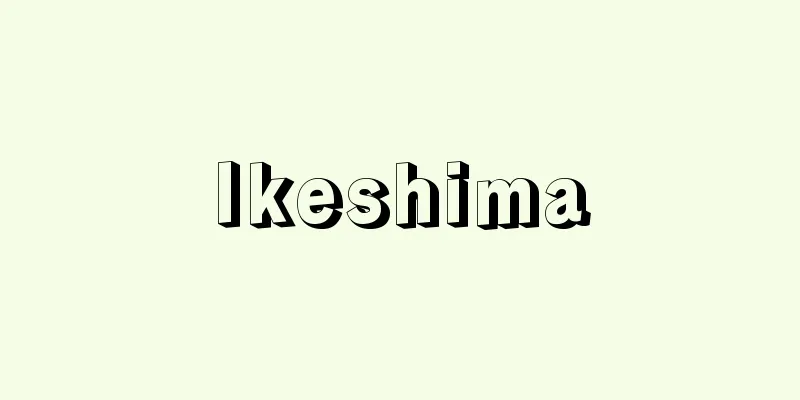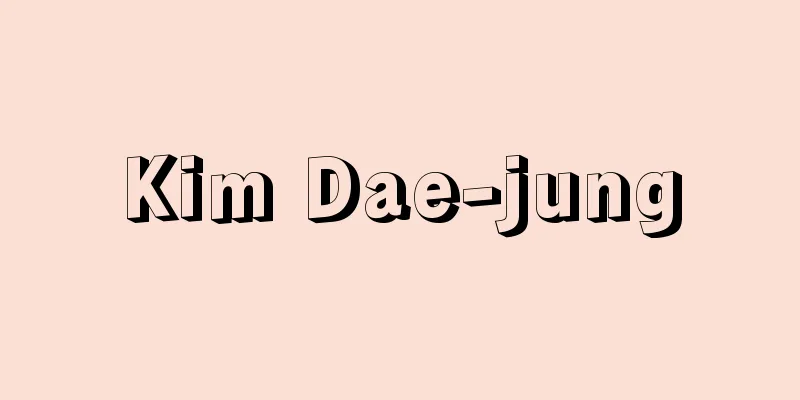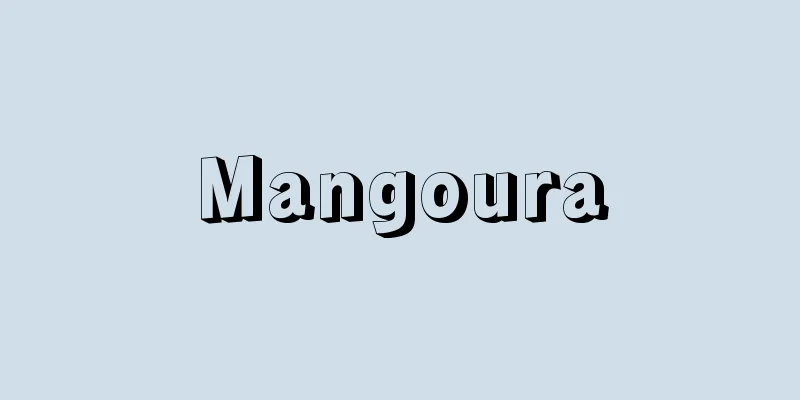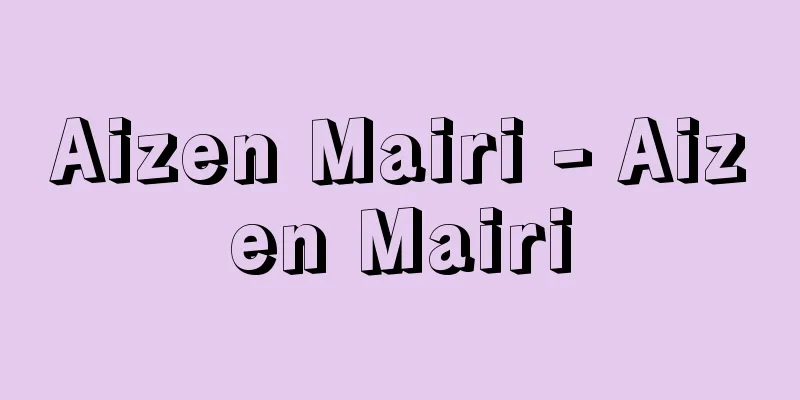Namibia - Namibia (English spelling)
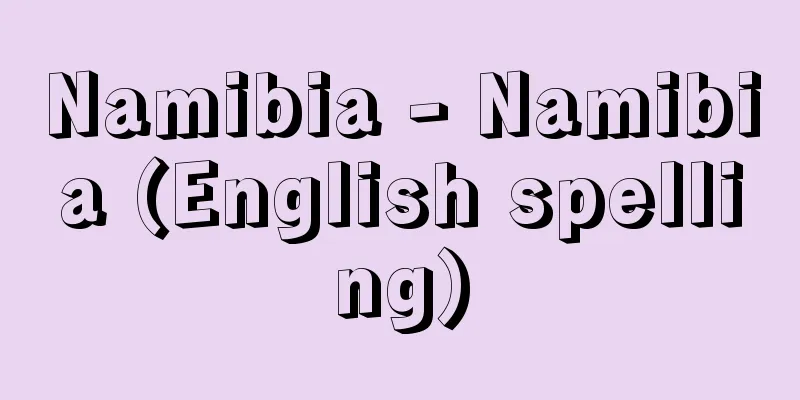
|
A republic in southwestern Africa. Formerly known as Southwest Africa. The country's name comes from the Namib Desert that runs along the country's coast. It borders Angola to the north, Botswana to the east, South Africa to the south, and Zambia to the northeast, and faces the Atlantic Ocean to the west. Since 1920, it has been a mandate of the Union of South Africa, but in 1945, the Union of South Africa refused to place Southwest Africa under the United Nations trusteeship system, and illegal rule continued. On March 21, 1990, it officially became independent from the Republic of South Africa (which was renamed in 1961 when the Union of South Africa became a republic). It has an area of 825,615 square kilometers (2011), a population of 2.1 million (2011 census), a population density of 2.5 people per square kilometer, and a population growth rate of 1.5% per year (2011). The capital is Windhoek. [Yuichiro Fujioka] NatureThe country is divided into four regions: (1) the Namib Desert, which stretches 80 to 120 kilometers along the coast; (2) the Central Highlands, located inland and 1,000 to 2,000 meters above sea level; (3) the Great Escarpment, a steep cliff region that stretches between the Namib Desert and the Central Highlands; and (4) the Kalahari Basin, which stretches from the north to the southeast. The climate is dry throughout the country, with large temperature differences between day and night. Annual precipitation is 600 mm in the northeast and less than 50 mm in the southwest, with the rainy season being from December to March. The cold Benguela Current flows from south to north in the seas off Namibia, which causes frequent fog in the Namib Desert. The fog is an important water source for the plants and animals that live in the Namib Desert, where precipitation is scarce. The only perennial rivers are the Kunene, Okavango, and Zambezi rivers on the northern border, and the Orange river on the southern border. The Fish, Kuisebu, and Swakop rivers are seasonal rivers that only flow during the rainy season. The vegetation is desert in the west, with almost no plants growing except in seasonal rivers. Endemic species such as Welwitschia (whose horticultural name is Fantastic) of the Welwitschia family and Quercus serrata of the Cucurbitaceae family grow here. Inland, savannah spreads, dominated by acacia, a legume tree. In the north, a vegetation zone dominated by mopane, a legume tree, spreads. Animals include herbivores such as elephants, rhinos, giraffes, zebras, springboks, and hippos, and carnivores such as lions, cheetahs, and leopards. Cape Cross along the coast is a habitat for fur seals. There are more than 20 protected areas, including Etosha National Park in the north. The rock art site at Twyfelfontein in Cunene Region was inscribed on the UNESCO World Heritage List in 2007. [Yuichiro Fujioka] historyNamibia is believed to have originally been inhabited by ethnic groups who spoke languages related to the Khoisan, and by the 16th century, the Ovambo and Herero, who spoke Bantu languages, had migrated from the north to the centre of Namibia. The Portuguese arrived on the Atlantic coast at the end of the 15th century, but European countries had little interest in the area due to the desert region. In 1878, the British occupied the only port in the region, Walvis Bay. The area excluding this port became German South-West Africa at the Berlin Conference of 1884-1885. In response to German colonization, rebellions by the Herero and Nama broke out between 1904 and 1907, but both were suppressed. During World War I, the South African Union Army occupied South West Africa, and in 1920 it became a League of Nations Mandate under South African administration. After World War II, the United Nations recommended that South Africa, which continued to oppress the indigenous people through its racial discrimination policy (apartheid), transfer South West Africa to a UN trust territory and recognize the self-government and future independence of the inhabitants, but South Africa ignored this recommendation. In 1966, the United Nations resolved to end the trusteeship of the Republic of South Africa (formerly the Union of South Africa) and to place South West Africa under UN control, and in 1967, the United Nations Council for South West Africa was established to handle administration until independence. In 1968, the UN General Assembly resolved to rename the country Namibia, and in 1971, the International Court of Justice recommended that South Africa end its illegal rule and immediately withdraw. South Africa rejected these recommendations and proceeded to reduce its autonomy and strengthen apartheid. Meanwhile, within the country, the Ovambo people, who are the largest population, formed the South West African People's Organization (SWAPO) in 1962 to oppose illegal rule, and began armed struggle in 1966. In 1975, the South African government established a constitutional conference (Tarnhale Conference) with forces other than SWAPO in order to avoid international criticism. The UN and SWAPO opposed this and resolved to achieve independence through fair elections under UN supervision. In December 1978, South Africa unilaterally held elections in disregard of UN resolutions, which resulted in the Democratic Turnhalle Alliance (DTA) winning a majority and establishing a Constituent Assembly, which transitioned to a National Assembly in May 1979. A transitional government led by the DTA was established in July of the same year, but in January 1983 South Africa dissolved the government due to conflict with the DTA and restored direct rule by a chief executive dispatched by South Africa. In November 1983, the Multi-party Conference (MPC) was formed by six parties, including the DTA and the SWAPO democratic faction, and in June 1985 the MPC established a transitional government. However, this government was a puppet government of South Africa and did not receive international recognition. Namibia became the base for the South African army that intervened in the Angolan civil war that broke out after Angolan independence in 1975, and the South African army, Angolan army, and Cuban army confronted each other near the border with Angola. In 1982, the United States, which supported South Africa, proposed to recognize Namibia's independence in exchange for the withdrawal of Cuban troops from Angola. In February 1988, representatives of Angola, Cuba, the United States, and South Africa met and agreed on Namibia's independence on the condition that Cuban troops withdraw from Angola. In November 1989, a constituent assembly election was held, and Namibia achieved independence in March 1990, with SWAPO Chairman Samuel Daniel Shafiishuna Nujoma (1929- ) becoming the first president. [Yuichiro Fujioka] PoliticsThe Constituent Assembly was bicameral and a multi-party system was adopted. It consisted of a 72-member National Assembly and a National Council consisting of two representatives elected from each of the 13 regions. In elections after independence, SWAPO won a majority of seats in both houses. The head of state was the president, who served for a five-year term, with no possibility of re-election (a third term was prohibited). President Nujoma advocated a policy of ethnic reconciliation, and worked to resolve conflicts during the liberation struggle, while also beginning to reform the unequal land ownership system that was the basis of disparities between whites and blacks. Walvis Bay, which remained an exclave of South Africa even after independence, was returned in March 1994 after negotiations. In diplomacy, South Africa is a member of the United Nations, the Organization of African Unity (reorganized as the African Union in July 2002), and the Commonwealth of Nations, and in terms of relations with neighboring countries, it is a member of the Southern African Customs Union and the Southern African Development Coordination Council (which became the Southern African Development Community in 1992). In December 1994, the first presidential and national elections since independence were held, and Nuyoma was re-elected with 76.3% of the votes, with SWAPO winning the most seats. Nuyoma also won the presidential election in December 1999, becoming president for a third term (his first term was elected by parliament, so it was accepted as not violating the constitutional provision prohibiting a third term). In the 2004 presidential election, Nuyoma did not run, in accordance with constitutional provisions, and SWAPO's official candidate, Hifikepunye Lucas Pohamba (1935- ), was elected and became president. Pohamba was re-elected in the 2009 presidential election. [Yuichiro Fujioka] Economy and IndustryNamibia's gross domestic product (GDP) was $9.4 billion (nominal GDP, 2009), ranking 19th among sub-Saharan African countries, and its per capita GDP was $4,512 (nominal GDP, 2009), ranking 7th. The real economic growth rate averaged 3.9% in the 1990s and 4.5% in the 2000s, and has continued to grow relatively steadily. However, the gap between the wealthy and the low-income classes is large, and the Gini coefficient (an index measuring inequality in the distribution of income in society) is 61.3 (World Bank, 2010), which is one of the highest in the world. Namibia's main industries are mining, livestock farming, and fisheries. Mineral resources include diamonds, uranium, copper, and zinc, and are abundant in variety and production. In the 1990s, diamonds accounted for the largest proportion of mineral production, but since the 2000s, production of minerals other than diamonds has exceeded that of diamonds. In particular, its annual uranium production was 4,626 tons (2009), ranking fourth in the world, and its annual diamond production was 2.3 million carats (2009), ranking eighth in the world. These minerals are mined by multinational corporations from South Africa and other countries. Diamonds in Oranjemund are mined by South African De Beers, and uranium in Lessing is mined by British Rio Tinto Zinc. Agriculture is carried out by large farms with irrigation facilities in the central and southern parts of the country, and small-scale farmers in the north who depend on rainfall. The main products are cash crops such as corn, grapes, and dates, as well as pearl millet and legumes for self-sufficiency. Livestock is mainly raised as cattle and Karakul sheep for fur. Most of the cattle is exported to South Africa. Herring and anchovy fishing, centered around Walvis Bay, was once thriving, but the advance of foreign deep-sea fishing fleets has led to a decline in catches, and the government is working to conserve fishing resources. Manufacturing is gradually developing, particularly in food processing and alcohol brewing, and tourism is also growing. The currency is the Namibian dollar, issued by the Bank of Namibia (the central bank). Private banks include First National Bank and Standard Bank. Namibia also has close trade ties with South Africa, and is a member of the Southern African Customs Union along with Botswana, Lesotho, and Eswatini (formerly Swaziland). In 2012, 70% of total imports and 16% of total exports were traded with South Africa. Major exports include minerals such as diamonds and uranium, processed seafood products, livestock products and livestock, and refined zinc. [Yuichiro Fujioka] societyThe largest ethnic group in Namibia is the Ovambo, who make up about 50% of the total population. Other ethnic groups living in Namibia include Bantu groups such as Herero, Himba, Bukshu and Subiya, and Khoisan groups such as Damara, Nama and San. Namibia, along with other southern African countries (Eswatini, Botswana, South Africa, etc.), has a high AIDS infection rate, with the AIDS infection rate among adults (aged 15-49) reaching 21.3% (2003). The official language is English, with Afrikaans and German also widely spoken. After independence, emphasis was placed on primary education, with over 1,000 primary schools and over 13,000 students at the University of Namibia (2010). The literacy rate is 89% (2012). Christianity is widespread, with an estimated 90% of the population being Christian. As a former German colony, the majority of the population is Lutheran, with Catholics and Dutch Reformed Christians also found. The main cities are the capital Windhoek, Walvis Bay, Tsumeb and Keetmanshoop. The country has a total railway line of 2,341 km, which runs from South Africa through the copper mining areas of Keetmanshoop, Windhoek and Tsumeb to the northern city of Ondangwa, and extends west to Walvis Bay and Swakopmund. [Yuichiro Fujioka] Relations with JapanThe Japanese government recognized Namibia at the same time as independence on March 21, 1990, and diplomatic relations began. As of 2011, the cumulative total of yen loans and grant aid was 10,091 million yen and 6,599 million yen, respectively. In terms of technical cooperation, the dispatch of Japan Overseas Cooperation Volunteers (JOCV) members began in 2006, and a total of 71 members had been dispatched by 2013. In addition, at the time of the Great East Japan Earthquake in March 2011, the Namibian government donated 1 million dollars to the Japanese government. In 2009, Namibia's exports to Japan were 4 billion yen, with the main export products being fresh fish and shellfish and zinc. Imports from Japan were 900 million yen, with the main import products being automobiles and machinery. [Yuichiro Fujioka] "The Rise of Southern Africa" by Burchett, translated by Yuichi Yoshikawa (1978, Simul Publishing Co.) "Post-conflict Peacebuilding and Democracy" by Shinichi Mizuta (2012, Kokusai Shoin) [References] | | | | | | | [Additional resources] |"> Namibia flag ©Shogakukan Illustration/Shogakukan Creative "> Namibia location map Source: Shogakukan Encyclopedia Nipponica About Encyclopedia Nipponica Information | Legend |
|
アフリカ南西部にある共和国。旧称は南西アフリカ。国名は国の海岸部に連なるナミブ砂漠にちなむ。北はアンゴラ、東はボツワナ、南は南アフリカ、北東部でザンビアと接し、西は大西洋に面する。1920年より、南アフリカ連邦の国際連盟委任統治領であったが、1945年に南アフリカ連邦が南西アフリカを国際連合の信託統治制度の下に置くことを拒否し、不法統治が続けられた。1990年3月21日、正式に南アフリカ共和国(1961年に南アフリカ連邦が共和制に移行し改称)から独立した。面積82万5615平方キロメートル(2011)、人口210万(2011年国勢調査)、人口密度1平方キロメートル当り2.5人、人口増加率は年1.5%(2011)。首都はウィントフーク。 [藤岡悠一郎] 自然地勢は(1)海岸部を幅80~120キロメートルにわたって延びるナミブ砂漠、(2)内陸部に位置する標高1000~2000メートルの中央高地、(3)ナミブ砂漠と中央高地の間に連なるグレート・エスカープメントといわれる急崖(きゅうがい)地帯、(4)北部から南東部に広がるカラハリ盆地の4地域に分かれる。気候は乾燥気候が全域で卓越し、昼夜の温度差が大きい。年降水量は北東部で600ミリメートル、南西部で50ミリメートル以下であり、12~3月が雨季にあたる。ナミビア近海は寒流のベンゲラ海流が南から北へ流れ、その影響でナミブ砂漠では頻繁に霧が発生する。霧は降雨量の少ないナミブ砂漠に生息する動植物にとって重要な水源となる。恒常河川は北部国境を流れるクネネ川、オカバンゴ川、ザンベジ川、南部国境のオレンジ川のみで、それ以外のフィッシュ川やクイセブ川、スワコプ川などは雨季のみ水が流れる季節河川である。植生は、西部では砂漠となり、季節河川以外には植物がほとんど生育しない。ウェルウィッチア科のウェルウィッチア(園芸名は奇想天外)やウリ科のナラなどの固有種が生育する。内陸部ではサバンナが広がり、マメ科樹木のアカシアが優占する。また、北部ではマメ科樹木のモパネが優占する植生帯が広がる。動物は、ゾウ、サイ、キリン、シマウマ、スプリングボック、カバなどの草食動物やライオン、チーター、ヒョウなどの肉食動物が生息する。海岸沿いのケープクロスはオットセイの生息地である。北部のエトシャ国立公園をはじめ、20か所以上の保護区が設置されている。なお、クネネ州のトゥウェイフルフォンテーンに残る壁画遺跡が2007年にユネスコ世界遺産に登録された。 [藤岡悠一郎] 歴史ナミビアには、もともとコイサンに属する言語を話す民族グループが住んでいたとみられ、16世紀までにバントゥ系の言語を話すオバンボ人やヘレロ人がナミビア北部から中部に移住してきた。15世紀末から大西洋岸にポルトガル人が来航したが、砂漠地帯であるためヨーロッパ諸国の関心は薄かった。1878年にイギリスがこの地域の唯一の港ウォルビス・ベイを占領。この港を除く地域は1884~1885年のベルリン会議でドイツ領南西アフリカとなった。ドイツの植民地化に対し、1904~1907年にかけてヘレロ人、ナマ人の反乱が起きたが、いずれも鎮圧された。 第一次世界大戦中に南アフリカ連邦軍が南西アフリカを占領し、1920年に南アフリカ管理下の国際連盟委任統治領となった。第二次世界大戦後、国際連合は、人種差別政策(アパルトヘイト)によって先住民の抑圧を続ける南アフリカに対し、南西アフリカを国連の信託統治領に移行させ、住民の自治と将来の独立を認めるよう勧告したが、南アフリカはこの勧告を無視した。 1966年、国連は南アフリカ共和国(旧称、南アフリカ連邦)の信託統治を終了させ、南西アフリカを国連の管理下に入れることを決議し、1967年には、独立までの行政を担当する「国連南西アフリカ理事会」を設立した。また1968年の国連総会では国名をナミビアと改称することを決議し、1971年には国際司法裁判所が南アフリカに不法統治をやめ即時撤退するよう勧告した。南アフリカはこれらの勧告を拒否し、自治権縮小やアパルトヘイトの強化を進めた。一方国内では、最大の人口をもつオバンボ人が中心となり、不法統治に反対する組織「南西アフリカ人民機構(SWAPO:South West African People's Organization)」を1962年に結成し、1966年から武力闘争を開始した。1975年に南アフリカ政府は国際的な非難をかわすため、SWAPOを除いた勢力で制憲会議(ターンハレ会議)を発足させた。国連とSWAPOはこれに反対し、国連監視下での公正な選挙による独立を決議した。1978年12月に南アフリカは国連決議を無視して一方的に選挙を実施し、その結果、民主ターンハレ同盟(DTA:Democratic Turnhalle Alliance)が多数を獲得して制憲議会が成立、翌1979年5月に国民議会へ移行した。同年7月にDTAを中心とする暫定政府が発足したが、1983年1月に南アフリカはDTAとの対立から同政府を解散し、南アフリカが派遣した行政長官による直接支配を復活させた。1983年11月、DTA、SWAPO民主派など6党で多党会議(MPC:Multi-party Conference)が結成され、1985年6月にMPCによる暫定政府を発足させた。しかし同政府は南アフリカの傀儡(かいらい)政権で、国際的承認は得られなかった。 ナミビアは、1975年のアンゴラ独立後に起きたアンゴラ内戦に介入した南アフリカ軍の拠点となり、アンゴラとの国境付近では南アフリカ軍とアンゴラ軍、キューバ軍が対峙していた。1982年、南アフリカを支援するアメリカは、キューバ軍のアンゴラからの撤退を交換条件としてナミビアの独立を認めることを提案した。1988年2月、アンゴラ、キューバ、アメリカ、南アフリカの代表が会談し、キューバ軍のアンゴラ撤退を条件に、ナミビアの独立が合意された。1989年11月、制憲議会選挙が実施され、1990年3月に独立を達成、SWAPO議長のヌヨマ(ヌジョマ)Samuel Daniel Shafiishuna Nujoma(1929― )が初代大統領に就任した。 [藤岡悠一郎] 政治制憲議会は二院制がとられ、複数政党制が採用された。72名からなる国民議会と全国13地域から各2名ずつ選出された代表から構成される国民評議会からなる。独立後の選挙では両院ともSWAPOが多数議席を占めた。元首は大統領で任期は5年、再選まで(3選禁止)。大統領のヌヨマは民族和解政策を掲げ、解放闘争期の対立解消につとめるとともに、白人・黒人の格差の基になっていた不平等な土地所有制度の改革に着手した。独立以後も南アフリカの飛び地とされていたウォルビス・ベイは、交渉の末、1994年3月に返還された。外交では、国際連合、アフリカ統一機構(2002年7月アフリカ連合に改組)、イギリス連邦に加盟し、周辺国との関係では南部アフリカ関税同盟、南部アフリカ開発調整会議(1992年以降南部アフリカ開発共同体に移行)に加盟した。1994年12月、独立後初めての大統領選挙、国政選挙が実施され、ヌヨマは76.3%の支持率で再選、SWAPOが最大議席を獲得した。1999年12月の大統領選挙でもヌヨマが当選し、3期目の大統領に就任した(1期目は議会での選出のため3選を禁ずる憲法の規定に違反しないと容認された)。2004年の大統領選ではヌヨマは憲法の規定にしたがい出馬せず、SWAPOの公認候補ポハンバHifikepunye Lucas Pohamba(1935― )が選出され、大統領に就任した。2009年の大統領選挙では、ポハンバが再選された。 [藤岡悠一郎] 経済・産業ナミビアの国内総生産(GDP)は94億ドル(名目GDP、2009)で、サブサハラ(サハラ砂漠以南)アフリカ諸国のなかで第19位、1人当りGDPは4512ドル(名目GDP、2009)で第7位であった。実質経済成長率は1990年代には平均3.9%、2000年代は4.5%であり、比較的安定した成長を続けている。ただし、富裕層と低所得層との格差は大きく、ジニ係数(社会における所得分配の不平等を計る指標)が61.3(2010年。世界銀行)と世界各国のなかでも高い。ナミビアの主要産業は鉱業、畜産業、水産業である。鉱産資源はダイヤモンド、ウラン、銅、亜鉛などで、種類も多く産出量も豊富である。1990年代には、鉱物生産量のなかでダイヤモンドの占める割合がもっとも大きかったが、2000年代からダイヤモンド以外の鉱物生産量が上回るようになった。とくにウランの年間産出高は4626トン(2009)と世界第4位を占め、ダイヤモンドの年間産出高は230万カラット(2009)と世界第8位を占めている。これらの鉱産物は南アフリカをはじめとする諸外国の多国籍企業によって採掘されている。オラニエムントのダイヤモンドは南アフリカ系デビアス社、レッシングのウランはイギリス系リオ・ティント・ジンク社が採掘している。 農業は、国の中部・南部の灌漑(かんがい)設備を有する大規模農場と降雨に依存する北部の小規模農家によって行われる。おもな生産物は、換金作物であるトウモロコシ、ブドウ、ナツメヤシや自給用のトウジンビエ、マメ類である。畜産では、ウシと毛皮用ヒツジのカラクール種がおもに飼育される。ウシは大半が南アフリカに輸出される。ウォルビス湾を中心とするニシンとカタクチイワシの漁業が盛んであったが、外国遠洋漁業船団の進出によって漁獲量は減少し、政府は漁業資源保全につとめている。製造業は食品加工業や酒造業を中心に徐々に発達し、観光業も伸びている。 通貨はナミビア・ドルで、ナミビア銀行(中央銀行)が発行している。民間の銀行にはファーストナショナル銀行、スタンダード銀行などがある。貿易上も南アフリカと密接な関係にあり、ボツワナ、レソト、エスワティニ(旧、スワジランド)とともに南アフリカ関税同盟に加盟している。2012年の輸入総額の70%、輸出総額の16%が南アフリカとの取引であった。おもな輸出品はダイヤモンドとウランなどの鉱物、水産加工品、畜産物・家畜、精製亜鉛である。 [藤岡悠一郎] 社会ナミビアで最大の人口を有する民族は総人口の約50%を占めるオバンボであり、そのほかバントゥ系のグループであるヘレロ、ヒンバ、ブクシュ、スビヤやコイサン語族(コイン語族)のグループであるダマラ、ナマ、サンなどの民族が住んでいる。 ナミビアは他の南アフリカ諸国(エスワティニ、ボツワナ、南アフリカなど)とともにエイズ感染率が高く、成人(15~49歳)のエイズ感染率が21.3%(2003)に達する。 公用語は英語で、アフリカーンス語、ドイツ語も広く通じる。独立後、初等教育に力点が置かれ、小学校数は1000校以上、ナミビア大学には1万3000人以上(2010)の学生がいる。識字率は89%(2012)。宗教は、キリスト教が広く普及し、90%がキリスト教徒とみられる。ドイツ植民地であったためルター派(ルーテル派教会)信者が多く、カトリックやオランダ改革派などの信者もみられる。主要都市は首都ウィントフーク、ウォルビス・ベイ、ツメブ、ケートマンスフープである。国内には総延長2341キロメートルの鉄道路線が敷かれ、南アフリカからケートマンスフープ、ウィントフーク、ツメブの銅鉱山地帯を通り、北部の都市オンダングワまで連なり、西はウォルビス・ベイやスワコプムントに延びている。 [藤岡悠一郎] 日本との関係1990年(平成2)3月21日の独立と同時に日本政府がナミビアを承認し、外交関係が始まった。2011年(平成23)時点で、円借款累計100億9100万円、無償資金協力は累計65億9900万円に上る。技術協力では、青年海外協力隊員の派遣が2006年から始まり、2013年度までに累計71人が派遣された。また、2011年3月の東日本大震災の際には、ナミビア政府から日本政府に100万ドルの義捐(ぎえん)金が寄付された。2009年のナミビアから日本への輸出額は40億円で、おもな輸出産品は生鮮魚介類などの水産物、亜鉛など。日本からの輸入額は9億円で、おもな輸入産品は自動車、機械などである。 [藤岡悠一郎] 『バーチェット著、吉川勇一訳『立ち上る南部アフリカ』(1978・サイマル出版会)』▽『水田慎一著『紛争後平和構築と民主主義』(2012・国際書院)』 [参照項目] | | | | | | | [補完資料] |"> ナミビアの国旗 ©Shogakukan 作図/小学館クリエイティブ"> ナミビア位置図 出典 小学館 日本大百科全書(ニッポニカ)日本大百科全書(ニッポニカ)について 情報 | 凡例 |
<<: Namib Desert - Namib Desert
>>: Naminohana - Naminohana (English spelling) surf sardine
Recommend
Kikyogahara - Kikyogahara
It is a plateau that stretches from the north to ...
Ichimatsu Ishida
Entertainer and politician. Born in Hiroshima Pre...
One-armed bandit
...The first machine was the Liberty Bell, create...
Republic of Indonesia - Indonesia (English spelling)
A country in Southeast Asia. Official name is the ...
Channel catfish
…It resembles the Japanese catfish, but can be di...
Vappu
...Seasonal events include the Kalevala Festival ...
Nyaaya (English spelling)
… [India] Indian logic was developed independentl...
Noguchi House
A manor located in Funai-gun, Tanba Province (curr...
Omaezaki [town] - Omaezaki
It is a former town in Haibara County in southern ...
Receptacle - Hard
Also called the flower bed. In the flower of angi...
Kaneshige
Kagoshima potato shochu. Made with white koji, it ...
《Yes Man》
...Works that belong to the educational theatre i...
Echigo Mountains
A mountain range that runs northeast-southwest al...
Kitakata [city] - Kitakata
The city occupies the area from the northern part ...
Dou Xian; Tou Hsien
[raw]? [Died] June 1992 A relative of the Later Ha...


